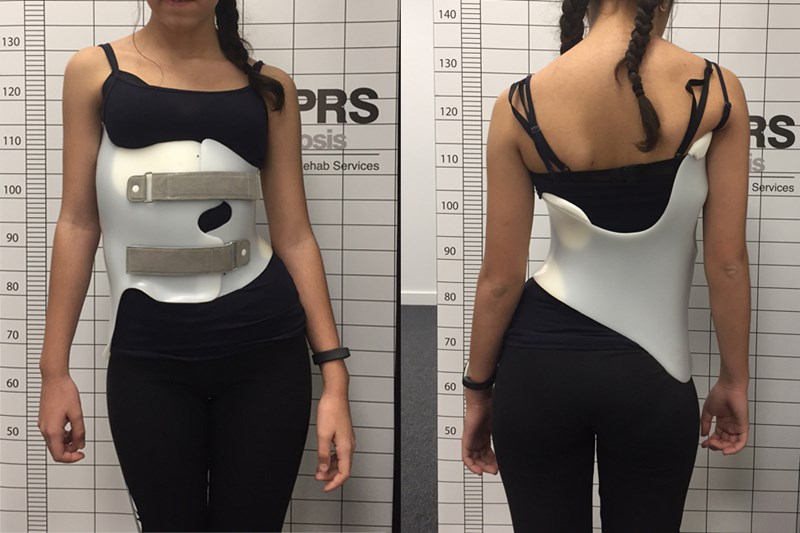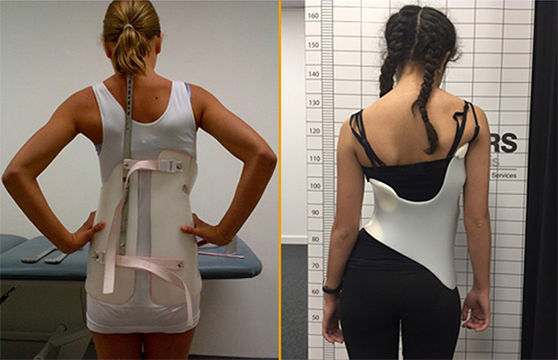
26 February 2021
For some years now, the London Orthotic Consultancy has been using the widely recognised Cheneau-Gensingen brace as a conservative treatment for adolescent idiopathic scoliosis. It provides a three-dimensional, gentle corrective movement to realign the spine and address posture distortion. A series of studies have shown that the Cheneau-Gensingen brace generates high success rates in the treatment of scoliosis.
The paper examines data from a prospective cohort of patients who have received treatment with a derivate of the asymmetric Cheneau-Gensingen brace. This data was compared to the results of a previous BRAIST (Bracing in Adolescent Idiopathic Scoliosis Trial, H.R.W et al) study, which examined patients treated with the rigid symmetric Boston brace.

image: Boston brace (left), Cheneau-Gensingen brace (right)
The results are compelling. Within the study’s criteria, the Cheneau-Gensingen brace achieved successful results of 92.9%, compared to 72% in the BRAIST study.
Whilst the Boston brace is typically prescribed by the NHS for adolescent scoliosis, this growing body of evidence supports LOC’s experience that the Cheneau-Gensingen brace can achieve more effective results, as well as providing a more comfortable and discreet alternative for patients.
LOC is committed to providing robust, evidence-based and non-invasive treatment for scoliosis in adolescents, as well as adults where suitable.
Find out more about the Cheneau-Gensingen brace method here.
Or, visit LOC’s scoliosis page to find out more about scoliosis and contact our scoliosis treatment team.
The operation used to treat severe scoliosis curves is typically spinal fusion surgery; a major procedure that involves moving muscles and realigning the skeleton into place. The curved, deformed vertebrae are fused together into a single bone, putting metal screws and rods into the spine to help straighten it. Surgery typically lasts between 4 and 8 hours depending on the severity of the curve. Bone graft is then taken from other parts of the body and used to cover the implants.
Following the operation, it is necessary to spend around a week in intensive care before returning home and the first few days are often uncomfortable. Most adolescents can expect to return to school from 2-4 weeks following surgery, but pain medication may be required up to 6 weeks following. A full recovery from the procedure can take up to a year, as it can take that long for the spine to heal fully.
Spinal fusion surgery causes the fused portion of the back to become permanently stiff, as a result, returning to sports that require large amounts of flexibility (ballet, yoga, gymnastics, dance) or contact (rugby, football, karate, hockey) may take longer.
Risks of spinal fusion surgery are like that of any other major procedure and include infection, blood clots and anaesthesia complications. The added risks include permanent nerve damage to the spine and paralysis.